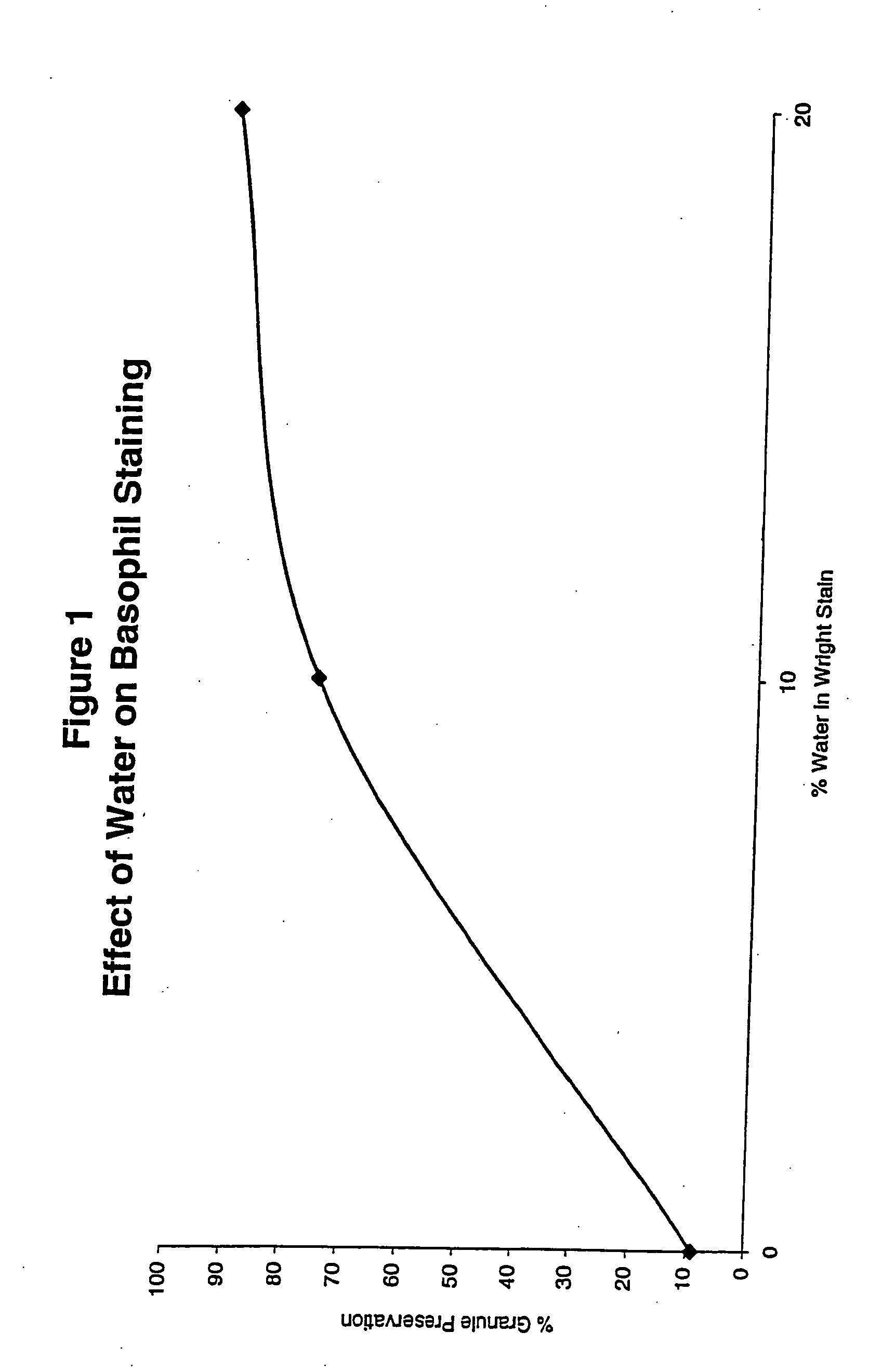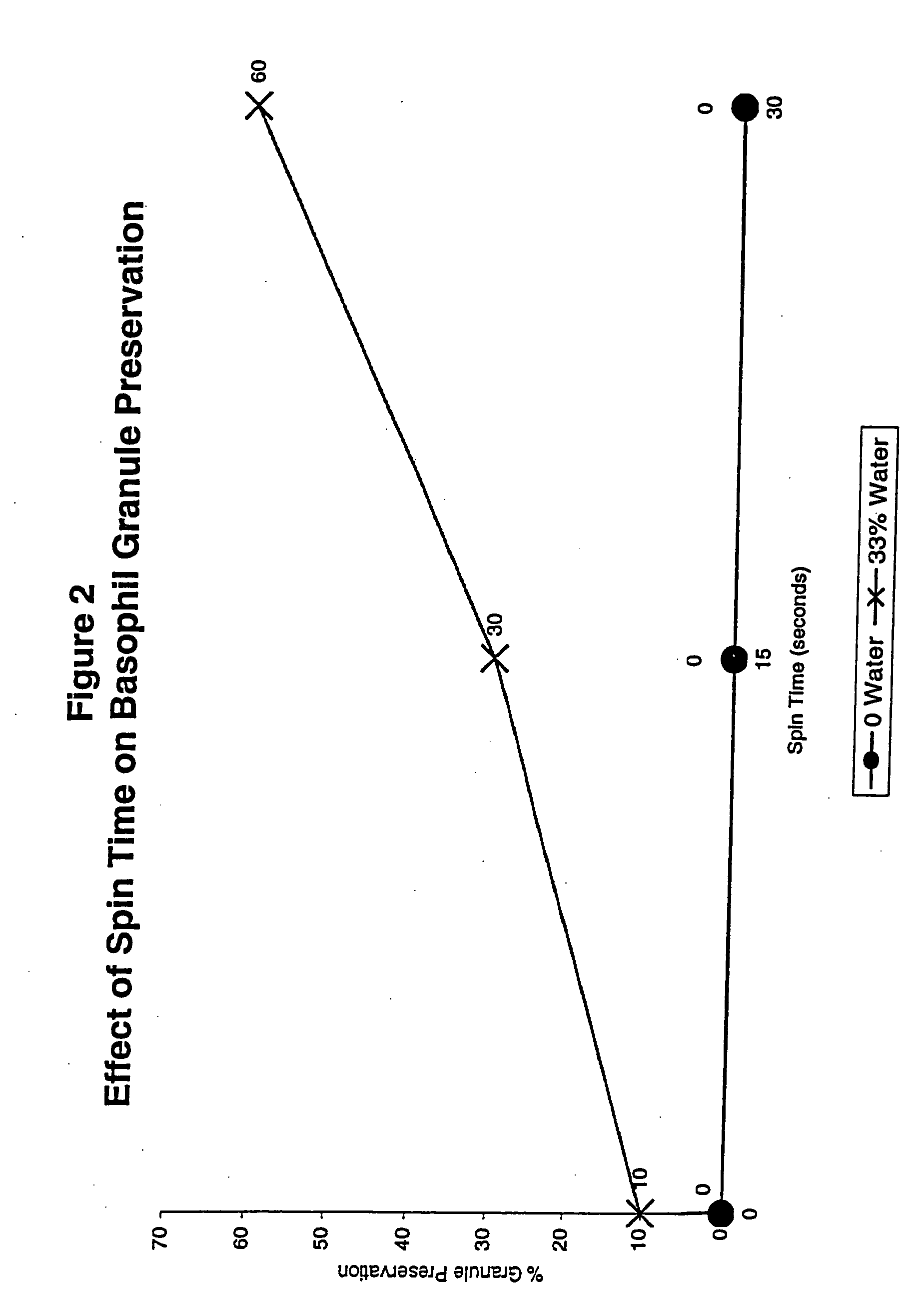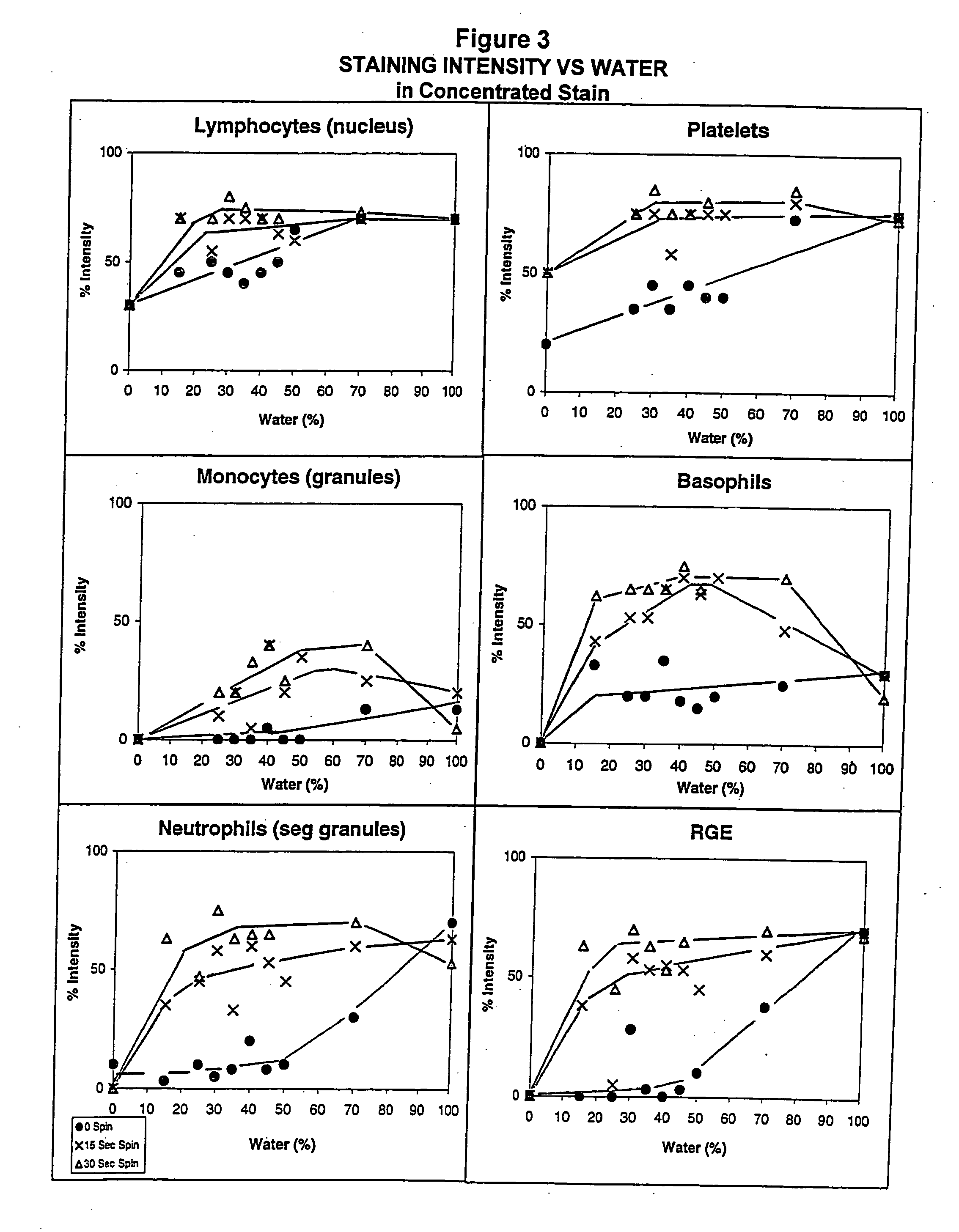Staining reagent for staining hematology samples in an automated staining apparatus
a technology of staining reagents and hematology samples, which is applied in the direction of instruments, chemical methods analysis, material analysis, etc., can solve the problems of consuming a great deal of stain, consuming two to three times as much stain, and rapid and intense staining, so as to reduce the concentration of organic solvents, improve the concentration of stain on the sample, and improve the effect of basophil granulation
- Summary
- Abstract
- Description
- Claims
- Application Information
AI Technical Summary
Benefits of technology
Problems solved by technology
Method used
Image
Examples
example
Equipment
[0062] Automated staining equipment as described above that is capable of mixing the thiazin and eosin stains in the desired proportion and diluting the resulting stain with the buffer employed is necessary for carrying out the process of the invention. An Aerospray® 7150 stainer sold by Wescor Inc., Logan, Utah, is suitable, and has been specifically programmed for carrying out the method of the invention. With such equipment, the rinse buffer is loaded into reservoir 40, the thiazin stain into reservoir 41, the eosin stain into reservoir 42, and the methanol into reservoir 43. An example of the method of the invention using the stains of the invention was conducted using a prototype Aerospray® 7150 as follows:
Stains
[0063] For the example, the thiazin and eosin stains had the following formulas: [0064] 1. Thiazin Stain [0065] 35% water [0066] 65% methanol [0067] 5.44 g / L Imidazole [0068] 9.28 g / L Maleic Acid [0069] 4.25 g / L KOH [0070] 2.29 g / L Azure B [0071] 1.15 g / L ...
PUM
| Property | Measurement | Unit |
|---|---|---|
| time | aaaaa | aaaaa |
| spray time | aaaaa | aaaaa |
| concentration | aaaaa | aaaaa |
Abstract
Description
Claims
Application Information
 Login to View More
Login to View More - R&D
- Intellectual Property
- Life Sciences
- Materials
- Tech Scout
- Unparalleled Data Quality
- Higher Quality Content
- 60% Fewer Hallucinations
Browse by: Latest US Patents, China's latest patents, Technical Efficacy Thesaurus, Application Domain, Technology Topic, Popular Technical Reports.
© 2025 PatSnap. All rights reserved.Legal|Privacy policy|Modern Slavery Act Transparency Statement|Sitemap|About US| Contact US: help@patsnap.com



